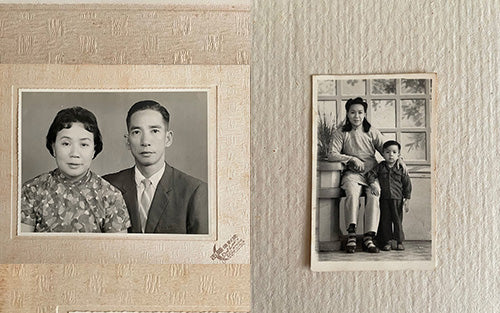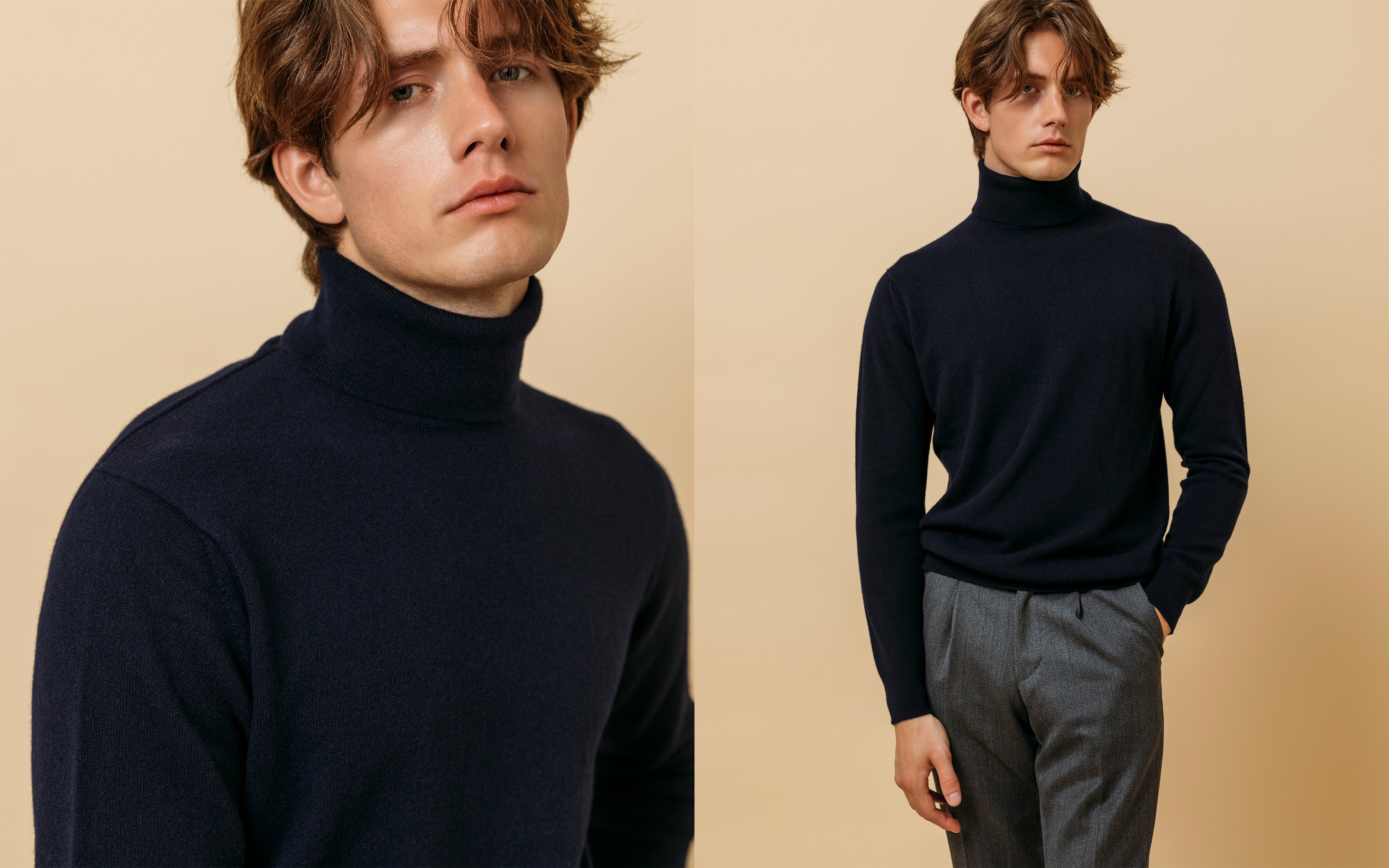
Why We Do What We Do
We often talk here in our journal about individual products, how they’re made and how we recommend you wear them, so, for a change we thought we’d cover a little more about our background and why we offer the kind of garments that we do. We feel strongly that it’s important our customers fully understand the purchases they make with us, and that includes understanding Colhay’s as a company too.
A Dignified Life
At the centre of the Colhay’s philosophy is dignity and the idea that, no matter your circumstances, one should always treat themselves with respect. Within this scope, values we hold dear include looking after oneself, valuing the possessions you have, and respecting others. These are principles we strive to live by, inspired by the older relatives of our founder, Ronnie Chiu.
Ronnie’s father and grandfather, and their entire generation in fact, put a great deal of effort into living a dignified life, despite living in poverty and in poor conditions. It’s this effort and commitment to valuing what they owned, and taking the best care of it, that we resonate with so deeply here at Colhay’s.
“My parents and grandparents grew up very poor in Hong Kong during the British colonial era, simply buying the best they could afford, dressing for themselves and not others was something they practiced,” says Ronnie, who feels very much inspired by the idea of valuing whatever you have.

Hong Kong, 1960s.
“My grandfather bought a few pieces of high quality British made clothing and wore them his whole life, taking such good care of them to the point they are still in the finest condition now, more than 10 years after his passing. A coat you buy is to be worn for 30 years, not three. For work he was always well groomed and dressed immaculately in a suit and shirt, no matter how unglamorous the job."
"When my grandparents had young children in the 50s, they lived in these rickety wooden shacks above high rises for the poor. If a heavy storm were forecasted during typhoon season, they would send the kids away with relatives for the night, but they'd stay behind with the others to pull the roofs down all night long. The next morning, they’d clear the mess and painstakingly restore these quarters to spotless condition. Some might say, what’s the point, they are such shoddy buildings anyway and when the next storm comes, you’ll have to do it all over again! But they were shacks to others, castles to my grandparents. They were like this with every area of their lives, holding themselves to the highest standard in the way they lived, the way they worked, the way they dressed, the way they treated others, no matter how poor they were.”

Ronnie's grandparents, 1950s.

Ronnie's grandmother and uncle, 1950s.
“If you dig really deep, self-respect lies at the crux of this. It has nothing to do with your circumstances, but everything to do with how you view yourselves. If you hold yourself in high regard, you’d always invest in the best you could afford, take care of everything you own, dress the best you can, do the best you can in your work, in any area of your life, no matter how others view you. I think this way of living is admirable, a culture that we are striving to bring back to some extent.”
By treating ourselves with dignity, we are also bringing dignity to the craftsmen who create our garments, as their skills and hard work are now being valued because we are cherishing what we buy.
Fashion and Craft Combined
Fast fashion and mass manufacturing has given the majority access to new styles and fashions, something that was previously the domain of the upper classes only. Although this allowed more people to enjoy the latest fashion which is a good thing, over the years, in the pursuit of offering more and more newness to consumers at a low price, the quality became poorer, and we now find oureslves at the other extreme, where there is an oversupply of poor quality, cheap clothes. Unfortunately, this led us culturally to a place where we value our possessions less.
At the same time, we also feel there is value in enabling people to enjoy newness and fashion.
Consequently, we believe in finding a balance between the two ideas. To us, this balance involves never allowing possessions to define you, but defining yourself by the way that you live. Although we are not necessarily advocating that you are only allowed to buy one coat your whole life, it just involves more considered purchases, buying clothes that you really love, learning how to take care of them and making them last; rather than buying lots of cheap dispensable things mindlessly.



Ronnie's father's made in Scotland sweaters, from the 1970s, still in pristine condition after more than 40 years
As a society we now make purchases very differently to the way previous generations did and though we’d certainly never encourage anyone to give up fashion entirely (something we know brings so many of us joy!), we champion simply shopping more mindfully, perhaps a bit less regularly, and disciplining ourselves to not constantly refresh our wardrobes.
We’re conscious that this means not just a change in both mindset and habits, but that buying less usually means buying better quality and so there is a financial commitment to be made too. Knowing that people are making a significant investment when they purchase a piece from us, we place a heavy focus on the quality of our garments. After all, it’s all well and good encouraging people to buy less and spend more, but we are acutely aware that we need to ensure we are rewarding people for this substantial sacrifice.
We want to offer clothes of the highest calibre and go to great lengths on our product pages to highlight the features and quality of each piece. We want to showcase each feature, each stage of manufacture, right down to the very last detail, so that our customers are well-informed about their potential purchases. Again, this harks back to eras gone by, but, now lost, is something we want to bring back.
Colhay’s Quality
In knitwear, you need every stage of manufacture to be the very best in order to produce a garment that is the best overall. The three stages are the best fibres, the best yarns and the best knitters. For each of these stages we source only the very best, and all three come together to create unbelievably soft garments that we know are sturdy and strong too, able to hold their shape for years to come.
We source our yarns from Todd & Duncan, one of the world’s oldest (established back in the 1800s) and most highly regarded mills. This world renowned producer has quality standards far above industry norms and are able to trace each cone of yarn right back to the farm where the fibres originated.


The fibres used to create the yarns are of the utmost importance too. They are the very foundation of our garments and so there is no room for compromise in quality. They must be as long and fine (in diameter) as possible. The longer the length, the stronger the resulting yarn, and the finer the width, the softer the yarn. To put this into context, the fibres used to create our superfine lambswool are around 18.5 microns in diameter, whereas the industry norm is around 21-24 microns.


Our knitters are based in Hawick, Scotland, where knitting is a heritage craft, and has been for decades, passed down through the generations. The knitters we work with possess unrivalled skills in their craft and use many techniques that have long since been disregarded by mass manufacturers in favour of quick production, despite the fact that they produce garments of superior quality.
One of the traditional techniques we mention above is known as handlinking. This is where a circular linking tool with spokes allows the knitter to manually link each component of the garment together, making the seams fit more naturally on the body. This is just one of many techniques and elements of production that contributes to the quality of garments knitted by our knitters.


Within the factory there are two types of machines, a Bentley cotton frame machine and our Shima machines too. The Bentley cotton frame is a historic piece of equipment that has been the backbone of Scottish knitting for many years. It’s a feat of mid-century engineering and is a behemoth of a machine that can knit up to eight pieces at once. It’s something that some heritage knitters insist on using due to the high quality nature of the knitted fabric produced.


The high quality fibres, yarns and knitters, along with traditional, longstanding techniques and equipment come together to create knitwear that we are incredibly proud of. Knitwear that we, and our customers, can be confident will be of undeniable quality and superior longevity.
If you’d like any more information about our manufacturing processes or the raw materials we use, you can learn more in the Quality section of our website here.










